Have you ever watched the moon rise over a silhouette of Ponderosa and Jeffrey pines, mountain ridges looming in the background? Ever wondered how that beautiful moon affects us down here on earth?
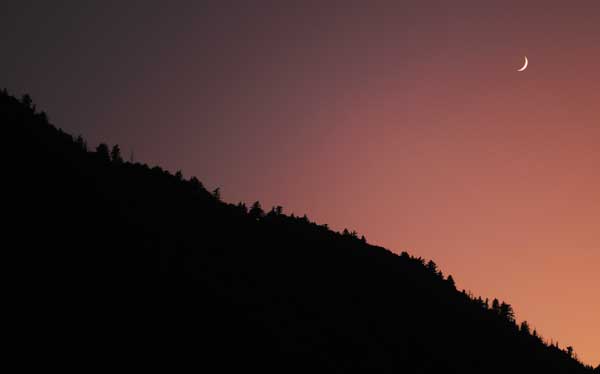 Here at High Trails, we get to wonder that very thing each week during our astronomy class. We encourage students to think critically about the effects of the moon on our everyday lives and in our communities, one of which is the tides: the cyclical rise and fall of sea levels in relation to land.
Here at High Trails, we get to wonder that very thing each week during our astronomy class. We encourage students to think critically about the effects of the moon on our everyday lives and in our communities, one of which is the tides: the cyclical rise and fall of sea levels in relation to land.
But how exactly are the moon and the tides connected? And what about the sun; does it affect tides as well?
First off…Gravity and the Moon!
Gravity is the force that causes every mass to attract every other mass. The strength of the attraction depends on the total amount of mass as well as the distance between the masses. Let’s take the earth and the moon, for example.
 The earth’s mass is significantly greater than the moon’s – approximately 81 times greater! This picture illustrates the size comparison of the moon (a precisely measured and nibbled to size grape) and the earth. The earth’s diameter is about 3.68 times that of the moon, so the moon is only 27% the size of the earth. The moon’s mass, however, is only 1.2% of the mass of earth!
The earth’s mass is significantly greater than the moon’s – approximately 81 times greater! This picture illustrates the size comparison of the moon (a precisely measured and nibbled to size grape) and the earth. The earth’s diameter is about 3.68 times that of the moon, so the moon is only 27% the size of the earth. The moon’s mass, however, is only 1.2% of the mass of earth!
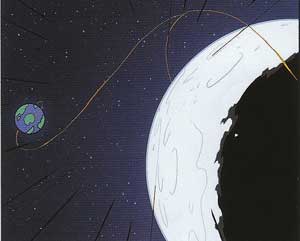 Because the earth’s mass is so much more, it’s gravitational pull, like a lasso, holds the moon in orbit around the earth. Although the moon’s mass is comparatively small, the moon has a gravitational pull (or lasso) on the earth, too.
Because the earth’s mass is so much more, it’s gravitational pull, like a lasso, holds the moon in orbit around the earth. Although the moon’s mass is comparatively small, the moon has a gravitational pull (or lasso) on the earth, too.
The earth’s oceans dramatically illustrate the effects of the moon’s gravity.
These large bodies of water have already been set in motion by winds and current, which makes them vulnerable to the gravitational powers of the relatively wee but mighty moon.
As the moon rotates around the earth, the moon’s gravity pulls these large bodies of water towards it, which looks like beachgoers frantically collecting their belongings and running inland. We call this phenomenon “high tide.” At that same time, other places experience a “low tide.”
Inertia and Lunar Tides
Now here’s where it gets tricky – at the moment this high tide nearest the moon happens, another high tide occurs on the opposite side of the earth.
 Why is this second high tide happening even though it is the furthest from the moon? Because of inertia: the tendency of moving objects to continue moving in a straight line at a constant velocity.
Why is this second high tide happening even though it is the furthest from the moon? Because of inertia: the tendency of moving objects to continue moving in a straight line at a constant velocity.
Due to the earth’s rotation on its axis, the inertia of the water on “the far side” of the earth is greater than the gravitational force of the moon. The water on “the far side” of the earth therefore bulges out in the exact same line causing a second high tide.
Because the moon orbits the earth in the same direction that the earth rotates on its axis, it takes the moon approximately 24 hours and 50 minutes to return to the exact same point over earth. This explains why shorelines tend to have two high tides each day: one when the moon is nearest the shore, and the other when the moon is farthest away. It also explains why the high and low tides commence around 50 minutes later than the previous day.
What about the Sun?
Now I have been giving the moon and inertia a lot of attention, but they do not govern the tides alone. Remember earlier when we were talking about gravity in relation to mass and distance? Our massive sun has a gravitational pull on the oceans as well. In spite of its extraordinary mass, the sun is much farther away from the earth, approximately 92.72 million miles farther! For that reason, the moon has more influence over the tides than the sun.
Nevertheless, at new and full moon, when the moon, earth, and sun are aligned in the sky, the sun and moon’s gravitational forces combine to cause some of the highest and lowest tides of the year. These are called spring tides (no relation to the season).
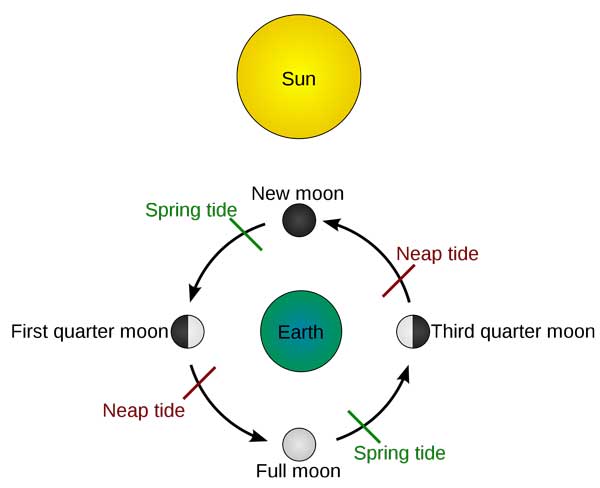 Neap tides, or the weakest tides, contrarily occur during the quarter phases of the moon. At these phases, with respect to the earth, the moon and the sun are perpendicular to one another. This 90-degree angle causes the sun’s gravitational pull to significantly (though not entirely) counteract the gravitational pull of the moon, which eliminates the dramatic high and low tides seen at new and full moon.
Neap tides, or the weakest tides, contrarily occur during the quarter phases of the moon. At these phases, with respect to the earth, the moon and the sun are perpendicular to one another. This 90-degree angle causes the sun’s gravitational pull to significantly (though not entirely) counteract the gravitational pull of the moon, which eliminates the dramatic high and low tides seen at new and full moon.
You might be wondering, aren’t there other factors that affect the tides? Yes! Aside from the relative distances, positions, and angles of the moon, earth and sun, shoreline shapes, wind currents, ocean floor topography, water depth and weather patterns also strongly influence the size, magnitude, and even frequency of the tides.
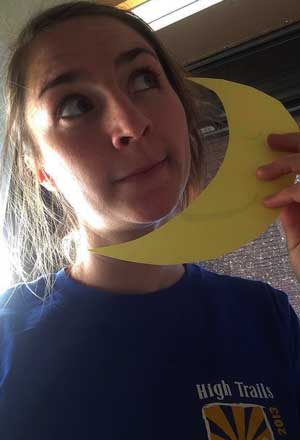 Well, my dear lunatics , we have come full cycle. As High Trails has taught me, the universe offers countless lessons to those who pay attention, so remember that though you may be relatively wee, like the moon, you are mighty and influential; sometimes there are forces beyond our control (like inertia and gravity); great things can occur when great forces unite (check your local tide schedule!); and rarely do we accomplish anything alone.
Well, my dear lunatics , we have come full cycle. As High Trails has taught me, the universe offers countless lessons to those who pay attention, so remember that though you may be relatively wee, like the moon, you are mighty and influential; sometimes there are forces beyond our control (like inertia and gravity); great things can occur when great forces unite (check your local tide schedule!); and rarely do we accomplish anything alone.
I also hope you will smile knowingly, as I do, the next time you watch the tides change, see the moon rise, or hear the word “loony.” And perhaps I will see you on the trail one of these nights, as the moon rises above the silhouette of Ponderosa and Jeffrey pines, mountain ridges looming in the background.
At High Trails Outdoor Science School, we literally force our instructors to write about elementary outdoor education, teaching outside, learning outside, our dirty classroom (the forest…gosh), environmental science, outdoor science, and all other tree hugging student and kid loving things that keep us engaged, passionate, driven, loving our job, digging our life, and spreading the word to anyone whose attention we can hold for long enough to actually make it through reading this entire sentence. Whew…. www.dirtyclassroom.com


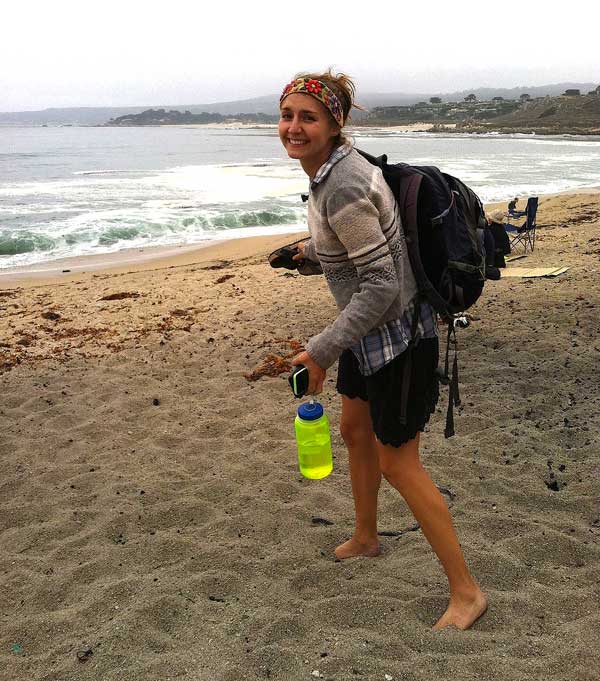
Comments are closed.